I found him dressed entirely in black Armani with the same color pants, shirt and shoes. The absence of a jacket or tie is an indication of the informal personality that it took for him to produce and star in his new movie The Polar Express.
It was hard for him to sit still while he talks. Trying to explain the new cinematic style called "Performance Capture." Surrounded by three-dimensional images about a fantastic trip to the world of Santa Claus, Hanks invited us to see an exclusive preview right inside a Warner Bros studio in Los Angeles and later, in the New York IMAX theater (for the 3D version), clarifying first -- this isn't an animated film, even though it looks like one.
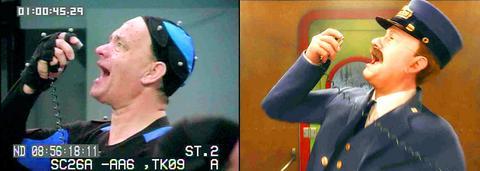
PHOTO: REUTERS
Fabian Wantal: With its Christmas theme, do you remember how you celebrated Christmas as a kid?
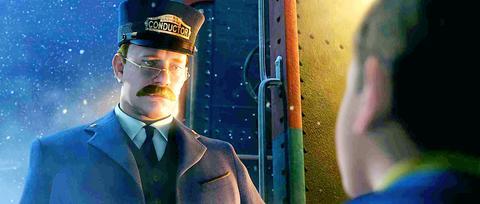
PHOTO: REUTERS
Tom Hanks: Hey, I celebrated whatever was at the window at Woolworth's. Christmas was almost a very personal and yet commercial enterprise. We always did it up nice. It was pretty much all about figuring out first of all what you want and then you let the parents know and hopefully you got what you wanted. It was always a blast. And it still is.
FW: Did you ever dress up as Santa?
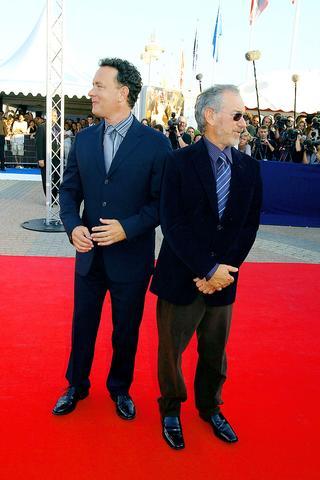
PHOTO: AFP
TH: I had a job once where I was Santa Claus for about three weeks. I sat in a little cookie gingerbread house and had on a stinky wig ... It was at a shopping center that was kind of going out of business and they were hoping that Santa Claus and his little gingerbread house would attract customers, and it didn't really attract customers. We only had about seven visitors a day.
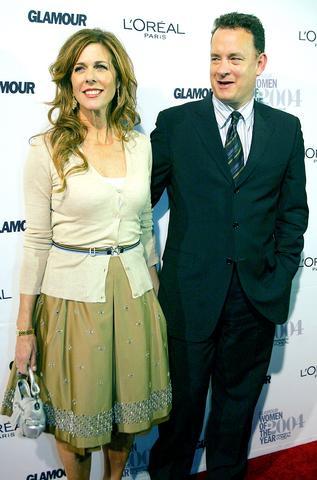
PHOTO: REUTERS
FW: And for your kids? Did you ever dress up as Santa Claus for them?
TH: No. That's somebody else's job.
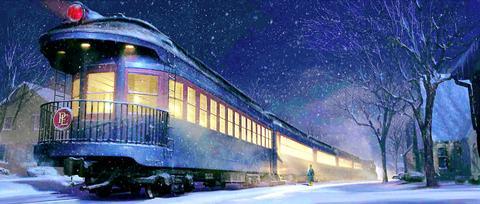
FW: As a father, how do you keep your own kids believing in Santa Claus?
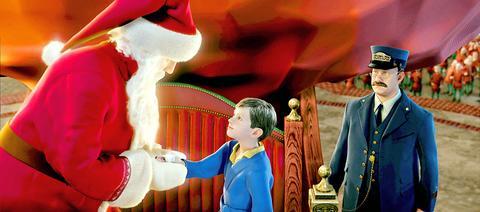
TH: I ask them what they believe. I don't try to influence them, let them find out for themselves.
FW: In your personal life, when did you lose your
innocence?
TH: I'm still the most innocent, oblivious human being on the planet. I keep waiting to lose my innocence. And it has yet to happen.
FW: I am referring to when you figured out if there really was a Santa Claus.
TH: I put it together pretty quick that Santa Claus does exist because you know, I go to bed on Christmas Eve and there are presents around the tree the next morning and the cookies that we left the night before were gone. I always figured it out right away that there is a much bigger belief than that some fat guy is coming down the chimney. As a matter of fact, if I had seen a fat guy coming down the chimney, I would have hit him over the head with a pole.
(FW: Being a specialist in these kinds of family movies, it is surprising that Tom Hanks was not brought up in a stable family environment. His parents, in fact, were among the first couples to get legally divorced in the US. And he followed that same example. With his wife Samantha Lewes, he got married two months after his son, Colin, was born. And after nine years of marriage he got divorced in 1987, to marry the next year, actress Rita Wilson, who he met filming the movie, Volunteers.
Since that time, he is an example of a solid marriage, in a family that now has two sons, Chester Marlon (14) and Truman Theodore (eight).)
FW: Did you film the movies Toy Story and now The Polar Express for your sons, Truman and Chester?
TH: I did this in particular because the book is one of the best I had read in a long time. And I wanted to take it to the big screen, keeping all the same emotional impact of the original. It isn't just a child's story, adults enjoy it, too. Of course, my family sees me in these kinds of movies but I don't do it for them. Quite frankly, my kids have already seen so much of my work, I've got to drag them off to see a new movie.
FW: What about your wife? What does she think when you are filming a movie?
TH: My wife? She says, `What time are you going to be done (laughing)?'
(FW: Blockbusters aplenty, we can't ignore the fact that Tom Hanks has massive clout in Hollywood. For the movie, A League of Their Own he gained 15kg (by eating ice cream). He lost that same weight for his role in the movie, Philadelphia. And in Cast Away, he trained specifically to add the first 25kg and then lose it, for the same movie. Having taken his first important steps on television, his role as the drunk friend of Christopher Lloyd in the series, Taxi, is unforgettable. And it was just after a role in the TV series, Happy Days, when the main character, Ron Howard, offered him a small part in the movie that he was going to produce with John Travolta. But Travolta ended up saying "no" and Tom Hanks landed his first big role as a main character in Splash, in exchange for US$70,000. That was a big amount at that time but pennies compared to the US$70 million that he made thanks to a percentage of the earnings from Forest Gump or the US$20 million that he gets for each new film. He is one of the few actors that has succeeded in going from comedies to dramas, having won the Oscar in both categories, for two consecutive years. One with Forest Gump and Philadelphia (also nominated for Saving Private Ryan and Cast Away. Not wanting to take any time-off, three of his movies are coming out all in the same year. First was The Ladykillers with the Coen brothers; followed by The Terminal with Catherine Zeta Jones and Steven Spielberg. And to finish up his year of big movies, here we have him with the animated performance in the new movie, The Polar Express.)
FW: What is Performance Capture? How is it possible that an animated movie is not animated?
TH: Every movement you see on the screen was not animated. The whole movie The Polar Express was performed by a human being on a sound stage. The filmed performance is digitally rendered, transforming into a drawing, like an oil painting. That's why it is called Performance Capture, because it literally captures the performance. It is a similar kind of system they used to make Tiger Woods' videogames, where they put on different sensors and moved him around in a three dimensional environment, the cameras capture each moment so they can put it directly on the computer. On me, they placed 151 sensors on my face.
FW: 151 sensors? How were they put on?
TH: Every morning all of us would go to the makeup trailer and our makeup artists would lay our heads back and then put on a special mold that had been done to our faces with holes in it. I think that each sensor cost US$3 and we went through thousands of them every day, between the different actors. After every take, we would have our bodies and face checked to see if any of the sensors fell off. Because if one did and it was inside the volume where we were acting, if a sensor was laying on the floor and we didn't pick it up, that means the computer would pick up a piece of data. So suddenly, our ear would be hanging all the way down to the floor. (laughing).
FW: Did you also do the scenes as the little kid main character?
TH: Yes. It was a big challenge. Because the three main kids in the movie were really three adult actors. And of course, it is really rare that you get to take on a role and say okay, `I'm playing an eight-year-old kid on a train going to the North Pole.' It was ridiculous amounts of fun and the movie studio created a recess atmosphere.
FW: But the boy's voice, is also yours?
TH: The visual aspect of the movies is now beyond almost imagination but the sound is different. At first, we tried to change the voice with the computer and it didn't work. There are other characters that have my voice but for the youngest, we had to add some dubbing from another young actor, the main character from Spy Kids, Daryl Sabara.
FW: How many characters did you play in all?
TH: Five altogether, all the adults played young characters as if it came out of their own consciousness. From the express train conductor, to the child, the mysterious man, Santa Claus and also the father.
FW: Could you have filmed the same movie, normally, without the drawings?
TH: First of all, I think it would have been impossible to film certain action scenes, like when the train stops in the middle of the ice. In fact, a movie like that would cost a billion dollars. Seen from that side... (laughing) we saved Warner Bros US$900 million. Besides, from the beginning, we wanted to include the art and drawings from the original book, in the story of the movie.
FW: Can you produce with these kinds of digital effects, a virtual Robert Redford or Jack Nicholson, when they aren't around anymore?
TH: This type of technology is very close to doing that, yes. But in our case we did not want to achieve any kind of realism, we wanted to show it like the original illustrations in the book.
FW: You mean to say that in 100 years, with your image scanned in the movie, they can hire any actor and add his digitalized face from a movie, although it is not the real Tom Hanks?
TH: Yes, it is possible. In that sense, it is all a question of money (he laughs). My image doesn't work for free, even though it will be my grandchildren making those deals. There are a huge number of legal things that have to be worked out, copyrighting of likenesses, how the Screen Actors Guild is going to feel about that the state of actors that go down and what permission is used. It is as much as a conundrum as everything that's on the Internet. You can look at the music business right now and understand how that it is as confused and how much of a mess it is, and yet at the same time, how much freedom it gives you.
FW: And the Oscars? If it is not an animated cartoon, what category would it be in?
TH: We will have to see about that, because we need a new category. Or we should ask Santa Claus for that. The best gift, ever.
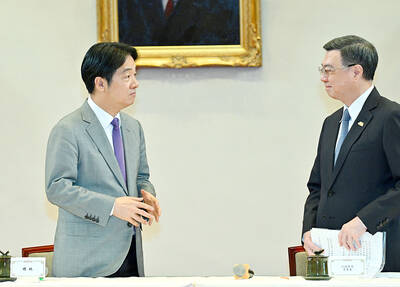
Under pressure, President William Lai (賴清德) has enacted his first cabinet reshuffle. Whether it will be enough to staunch the bleeding remains to be seen. Cabinet members in the Executive Yuan almost always end up as sacrificial lambs, especially those appointed early in a president’s term. When presidents are under pressure, the cabinet is reshuffled. This is not unique to any party or president; this is the custom. This is the case in many democracies, especially parliamentary ones. In Taiwan, constitutionally the president presides over the heads of the five branches of government, each of which is confusingly translated as “president”
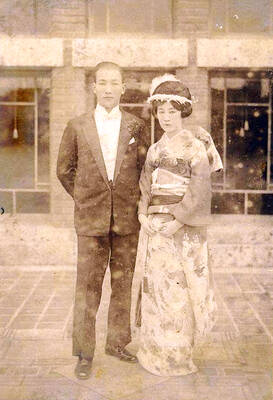
Sept. 1 to Sept. 7 In 1899, Kozaburo Hirai became the first documented Japanese to wed a Taiwanese under colonial rule. The soldier was partly motivated by the government’s policy of assimilating the Taiwanese population through intermarriage. While his friends and family disapproved and even mocked him, the marriage endured. By 1930, when his story appeared in Tales of Virtuous Deeds in Taiwan, Hirai had settled in his wife’s rural Changhua hometown, farming the land and integrating into local society. Similarly, Aiko Fujii, who married into the prominent Wufeng Lin Family (霧峰林家) in 1927, quickly learned Hoklo (commonly known as Taiwanese) and

The Venice Film Festival kicked off with the world premiere of Paolo Sorrentino’s La Grazia Wednesday night on the Lido. The opening ceremony of the festival also saw Francis Ford Coppola presenting filmmaker Werner Herzog with a lifetime achievement prize. The 82nd edition of the glamorous international film festival is playing host to many Hollywood stars, including George Clooney, Julia Roberts and Dwayne Johnson, and famed auteurs, from Guillermo del Toro to Kathryn Bigelow, who all have films debuting over the next 10 days. The conflict in Gaza has also already been an everpresent topic both outside the festival’s walls, where
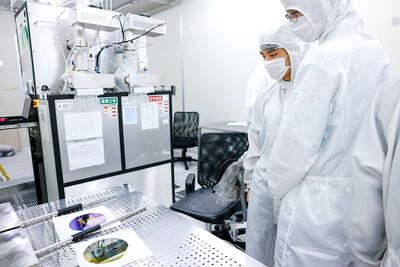
The low voter turnout for the referendum on Aug. 23 shows that many Taiwanese are apathetic about nuclear energy, but there are long-term energy stakes involved that the public needs to grasp Taiwan faces an energy trilemma: soaring AI-driven demand, pressure to cut carbon and reliance on fragile fuel imports. But the nuclear referendum on Aug. 23 showed how little this registered with voters, many of whom neither see the long game nor grasp the stakes. Volunteer referendum worker Vivian Chen (陳薇安) put it bluntly: “I’ve seen many people asking what they’re voting for when they arrive to vote. They cast their vote without even doing any research.” Imagine Taiwanese voters invited to a poker table. The bet looked simple — yes or no — yet most never showed. More than two-thirds of those